- Home
- J. T. Edson
Ole Devil at San Jacinto (Old Devil Hardin Western Book 4)
Ole Devil at San Jacinto (Old Devil Hardin Western Book 4) Read online
In 1835, the oppressions of Presidente Antonio Lopez de Santa Anna had driven the colonists in Texas to rebellion. Major General Sam Houston, realizing that his small force could only hope to face the vast Mexican army when conditions were favorable, had ordered a tactical withdrawal to the east.
At last, on Thursday, April 21, 1836, Houston decided that the time had come to make a stand. The Mexican Army, fifteen hundred strong, was on the banks of the San Jacinto river: Houston, with half that number, launched the attack that would decide the future of Texas.
Among those who had supported Houston from the beginning and were now ready to lay down their lives in the desperate struggle for independence was a young man named Jackson Baines Hardin. Those who knew him claimed he was a ‘li’l ole devil for a fight.’
The Battle of San Jacinto gave him yet another chance to prove it.
OLE DEVIL HARDIN 4: OLE DEVIL AT SAN JACINTO
By J. T. Edson
First published by Transworld Publishers in 1977
Copyright © 1977, 2015 by J. T. Edson
First Smashwordds Edition: April 2016
Names, characters and incidents in this book are fictional, and any resemblance to actual events, locales, organizations, or persons living or dead is purely coincidental. All rights reserved. No part of this book may be reproduced or transmitted in any form or by any means, electronic or mechanical, including photocopying, recording or by any information or storage and retrieval system, without the written permission of the author, except where permitted by law.
Cover image © 2015 by Edward Martin
edwrd984.deviantart.com
This is a Piccadilly Publishing Book
Series Editor: Ben Bridges
Text © Piccadilly Publishing
Published by Arrangement with the Author’s Agent.
Author’s Note
While complete in itself this book continues the history of Jackson Baines ‘Ole Devil’ Hardin which has been recorded chronologically in: YOUNG OLE DEVIL, OLE DEVIL AND THE CAPLOCKS, and OLE DEVIL AND THE MULE TRAIN. The events in the present volume are intermingled with those told in GET URREA, which for the purposes of convenience have been treated as a separate incident.
For the benefit of new readers, but to save my old hands from repetition, I have given the main details of Ole Devil Hardin’s and Tommy Okasi’s histories and armaments in the form of Appendices.
Ole Devil At San Jacinto in Explanation
Realizing that there was no hope of obtaining a satisfactory—or even a peaceful—settlement of their differences with the Mexican Government, i particularly after Presidente Antonio Lopez de Santa Anna had consolidated his position of absolute dictatorial ruler, the colonists in the Territory of the State of Coahuila, known as Texas, ii had accepted that they must be prepared for an all out war. Even before any attempt had been made to set up a formally constituted Republic of Texas, Samuel Houston had been given the rank of Major General and instructed to organize an Army. At the same time, prominent and wealthy Texians such as James Bowie, William Barrett Travis, Edward Burleson, Benjamin Milam, James Walker Fannin, Frank Johnson, and the Hardin, Fog and Blaze clan domiciled on their vast land grant along the Rio Hondo, had raised regiments—few of which had a strength exceeding a couple of hundred men—ready for the bloody fray they all knew was forthcoming.
The earlier stages of the rebellion, during the last months of 1835, had been successful as far as the colonists’ efforts were concerned. Several minor skirmishes had gone in their favor, as had their only major confrontation with the Mexican Army. On December 11, following the battle which had lasted for six days, iii el Presidente’s brother-in-law, General Martin Perfecto de Cós and his force of eleven hundred men had surrendered to Colonel Burleson at San Antonio de Bexar. In spite of objections from several of his subordinate officers, Burleson had allowed all of their prisoners to return unharmed to Mexico upon his having received Cós’s parole that he and the released men would refrain from any further hostile action against the Texians and Chicanos.
The protests against accepting the parole had proved to be justifiable.
Early in 1836, satisfied that he had established himself in complete control of all Mexican territory south of the Rio Bravo—which the Texians were already calling the ‘Rio Grande’—Santa Anna marched north with the avowed intention of crushing the rebellion and driving the ‘foreign land thieves’ from Texas. With this column, blatantly disregarding the parole he had given at San Antonio de Bexar, was General Cós.
While the earlier successes had boosted the morale of the Republic of Texas’s all too small Army, they had proved a mixed blessing in that they had presented a false impression of the struggle which lay ahead. As Houston and other far-sighted Texians had appreciated, their victories had been gained against poorly armed, badly trained and ineffectively commanded troops. Due to Texas being so far from the center of Mexican affairs, thereby offering few chances of distinction or promotion, career officers of good quality were disinclined to serve there.
Such men were marching north with Santa Anna. They were leading battle hardened veterans, soldiers who had fought almost continuously in the various inter-factional struggles that had plagued their country ever since it had wrested independence from Spain in 1824. As Houston knew, they would prove a more dangerous proposition than anything so far faced by the Texians; particularly as they would have a tremendous advantage in numbers.
Having accepted that war with Mexico was inevitable and unavoidable, as well as realizing that aid would be needed if victory was to be obtained, a Commission headed by Stephen Fuller Austin had been dispatched to the United States of America. They had a dual purpose, to obtain a supply of arms and ammunition and also to sound out the possibility of having their Republic annexed to become a part of that country. Many of the colonists, Houston and the Hardin, Fog and Blaze clan being prominent in their number, believed that attaining Statehood offered their only hope for a safe and prosperous future.
The first objective of the Commission, handled by Marsden Fog, had been successful. A number of volunteers had been persuaded to go to Texas and help in the struggle. Supporters had also procured a consignment of five hundred new caplock rifles, each with a bayonet, and a large quantity of ammunition. For diplomatic reasons, these had been delivered secretly and, as yet, the Army had not taken charge of them. iv
The Commission’s second purpose was achieving less decisive results. There was no unanimity of opinion on the matter of annexation in the United States. While many people saw the potential benefit of acquiring such a large area of developable land, others disagreed. Nor had the Commission’s suggestion that, because of the enormous territory involved Texas could be subdivided into three or four separate States, achieved the desired agreement. The very vocal Anti-Slavery faction opposed the idea on the grounds that to accept might lead to the creation of more so-called ‘Slave States’. They had tried to influence public opinion further by pointing out that a great many criminals had ‘gone to Texas’ v and that all the colonists were tarred with the same illegal brush.
Being all too aware of the disparity in numbers between the force under his command and the army which Santa Anna would be able to put into the field, Houston had not waited to find out the results of the Commission’s endeavors. He had appreciated the folly of attempting to meet such overwhelmingly superior strength in open battle except under his own terms and upon ground of his choosing. With that in mind, on learning the Mexicans were approaching the Rio Grande, he had ordered a withdrawal of all colonists into East Texas. Once there, he h
ad announced, they could select the most advantageous point at which to make a stand and, if things should go badly, the survivors would have an avenue of escape by crossing the border into the United States.
In addition to carrying out the withdrawal, the General had wanted to adopt what would one day become known as a ‘scorched earth’ policy. By destroying their abandoned homes, standing crops and everything else they could neither drive nor carry away, the colonists would have left their pursuers with a supply problem which would have grown increasingly difficult as Santa Anna advanced further into Texas. Despite having had the reasons for such drastic behavior explained to them, there had been most strenuous objections to the idea. When Houston had caused the town of Gonzales to be put to the torch, the assembled Texians and Chicanos had come so close to mutiny that he was compelled to refrain from continuing the destruction along his line of march.
Nor was the refusal to adopt what would have been a sound tactic—particularly as Santa Anna was to burn the deserted properties after looting them—the only problem facing the General. Many of the Texians and Chicanos, especially the latter, who were faced with the prospect of having to give up their homes, realized that el Presidente would show no mercy to any of them who fell into his clutches. For all that, there had not been a unanimous acceptance of the necessity to withdraw. In fact, with disastrous results in each case, three separate parties had elected to do otherwise.
Even before the withdrawal had been commenced, Colonel Frank Johnson, wishing to gain acclaim and loot, had begun to gather a force with the intention of—as he put it—carrying the war to the enemy by invading Mexico along the Coast Road. To this end, he had even gone so far as to attempt to seduce members of Houston’s main body from their duty. He had been thwarted in this and was still trying to raise sufficient support when the Tamaulipa Brigade, under the command of General José Urrea, had swept northwards. Attacking unexpectedly on February 26, Urrea had taken Johnson’s party by surprise at the town of San Patricio and routed them. Although their casualties had been only sixteen killed and twenty-one taken prisoner (they were later executed) the remainder scattered and fled. Johnson himself had escaped.
An even more tragic fate had befallen the second group, but at least their purpose was honorable and potentially beneficial to the colonists’ cause. Under the joint command of Colonels William Barrett Travis, James Bowie—after whom the all-purpose, basic fighting knife vi which he had made famous was named—and the recently arrived David ‘Davy’ Crockett, one hundred and eighty-three men had volunteered to remain at the old Franciscan Order’s Mission San Antonio de Valera. Built with the qualities of a fort as much as a place of worship, it was more commonly referred to as the ‘Alamo Mission’ on account of it once having been surrounded by a grove of ‘alamo’ plains cottonwood, Populus Sargentii, trees. Their assignment was to hold on for as long as possible, delaying Santa Anna’s main force while their comrades-in-arms were retiring to the east. In addition, they hoped to gain time in which Houston could assemble the whole of the Republic of Texas’s scattered forces. When these were gathered and, possibly, reinforced with volunteers from the United States, the General could make ready for the final confrontation. They had accepted that, by carrying out their commitment, they might not escape with their lives and they intended to make their deaths as costly as possible for el Presidente.
Conceding that the stand at the Alamo Mission would be helpful to his strategy, Houston had agreed to it. He had also offered to send in more men who might even turn the tide in the Texians’ favor.
For thirteen days, until the final mass assault on March 6, 1836, the band of greatly outnumbered defenders continued to hold the Alamo Mission. Nor were they deterred by the fact that, through no fault of their commanding general, the promised reinforcements failed to arrive. At last, inevitably, Santa Anna’s force had breached the walls. Once inside they had carried out his threat that no quarter would be given. It was believed that every male survivor of the bitter and bloody fighting had been slaughtered. vii Yet, in dying, the gallant little party had gone far towards doing what they had intended. They had inflicted so many casualties upon their assailants during the siege that one very senior Mexican officer was said to have announced at the conclusion of the fighting, ‘Another victory like this will defeat us.’
No such noble ideals, nor any useful motives, had been responsible for the fate of the third and by far largest group of dissidents.
Under the ineffectual command of Colonel James Walker Fannin, over four hundred of the colonists’ best armed and equipped men had been stationed in the grandiloquently named ‘Fort Defiance’ at Goliad. Having failed to supply the promised reinforcements for the defenders of the Alamo Mission, using Johnson’s defeat at San Patricio as an excuse, Fannin finally attempted to carry out an order from Houston. Destroying the Fort on March 9, he and his men set out to join the main body of the Army.
Not far from Goliad they were surrounded by the Tamaulipa Brigade—which was moving westwards in a leisurely fashion, looting and destroying property in passing. Fannin ordered his men to surrender after only a token resistance. Their lack of aggression did not produce the dividends which Fannin had hoped for. Although their captors told them that they would be free to go provided they gave their parole to quit Texas forever, they were marched from the town on Palm Sunday, March 27. Apart from a few who contrived to escape, they were massacred in cold blood. viii
While these events—which, for the sake of convenience, have been dealt with as separate episodes—were taking place, there were other developments occurring elsewhere.
On March 2, a Convention had assembled at Washington-On-The-Brazos and Texas was formally declared to be a free and independent Republic under the Lone Star flag. A provisional Government was established, with Henry Smith and James W. Robinson appointed respectively Governor and Lieutenant Governor. However, in a short while, Smith was replaced by David G. Burnet, who adopted the title ‘President5. None of these activities made any noticeable change in the conduct of the campaign. The professional politicians in what was announced would be the Republic’s Capital city played no part in the military operations beyond offering advice to Houston which would have been either impossible or disastrous to put into effect.
One thing the hard pressed General had not needed from the provisional Government was the kind of advice it and its opposition was showering upon him. He had sufficient problems of his own without needing such ‘help’. He was already having to contend with the type of men who formed the bulk of his command.
In spite of the propaganda put out by Benjamin Lundy and the Anti-Slavery faction in the United States, only a small proportion of the colonists had ‘gone to Texas’. The majority were decent, honest, law abiding and hard working. However, a man had to be endowed with considerable feelings of self sufficiency before embarking upon such a daring project as migrating with his family to the vast and hostile Texas of that period. Skilled in the use of weapons, the average colonist tended to be a rugged individualist who preferred to rely upon his own judgment. Taking orders, or accepting discipline, was foreign to his nature. In general, he knew nothing of team work and less about strategy.
Unless one remembered these points, it was difficult to understand their forces’ fiascos during the early months of 1836, considering their courage and proven fighting ability.
It said much for Houston’s personality—aided by the backing of loyal supporters with the wisdom to see he was adopting the only possible tactics under the circumstances—that he had contrived to hold together so large a proportion of the Army. He had needed all of his persuasive powers to have his suggestions accepted. Even so, when the main body had reached Gonzales on the eastern bank of the Guadalupe River, he was compelled by the weight of public opinion to halt in the hope that some definite action could be taken.
Feelings had been running high among the General’s force all through the days of the siege at the Alamo Mission.
There were many demands for an attempt to be made to relieve their embattled comrades-in-arms. However, the evening of March 12 brought confirmation of the terrible news that the Alamo had fallen. As no help would be needed, Houston had ordered the withdrawal to be resumed. To reduce the protests, he had promised that he would consider making a stand on the Colorado River provided Fannin and the Fort Defiance contingent joined them.
With the General and his Army once again retiring, the politicians did nothing to improve the situation. On March 18, in what was to become known as the ‘Runaway Scrape’, they fled from Washington-On-The-Brazos to set up what they referred to as a ‘temporary Capital’ at the little town of Harrisburg. Once there, they gave Houston a respite from their attentions. According to the reports he received, they were more concerned with obtaining stationery, accommodation, furniture and other such vital necessities for the correct functioning of a Government including ‘liquors suitable for genteel men to drink.’
Left to his devices by the politicians, although their behavior did nothing to improve the Army’s morale, the General was still experiencing the gravest difficulties with the men under his command. News of Fannin’s surrender arrived on March 25 and ended any hope of making a stand on the Colorado River. The General’s new argument, against which not even the most irresponsible of the hot-heads who were clamoring for a fight could disagree, was that the Army must continue to escort the ever growing number of refugees who were fleeing to the east. As he stated (and he was backed by Colonel Edward Fog of the Texas Light Cavalry and the aged but very capable chief of scouts, ‘Deaf’ Smith), not until the now homeless women and children were safely beyond the reach of Santa Anna’s main force and the Tamaulipa Brigade could any confrontation be considered.
Amidst all of the General’s trials and tribulations, he had one thing in his favor. Having reduced the Alamo Mission, Santa Anna did not immediately continue his pursuit of the ‘foreign land thieves’. Instead, perhaps wishing to give his men time to forget how they had suffered over six hundred casualties—close to a third of his main force—during the thirteen days’ fighting, he had spent a fortnight celebrating his ‘victory’ in and around San Antonio de Bexar. Nor, when the pursuit was resumed, did his Army show any sign of being in a hurry to catch up with their departing foes. In fact, believing that he had crushed the colonists’ will to resist, el Presidente was considering returning to Mexico City and leaving his subordinates to drive them out of Texas.

 Calamity Jane 11
Calamity Jane 11 The Floating Outift 33
The Floating Outift 33 Cap Fog 5
Cap Fog 5 The Floating Outfit 34
The Floating Outfit 34 The Code of Dusty Fog
The Code of Dusty Fog The Floating Outfit 21
The Floating Outfit 21 The Floating Outift 36
The Floating Outift 36 Calamity Jane 2
Calamity Jane 2 Calamity Jane 6: The Hide and Horn Saloon (A Calamity Jane Western)
Calamity Jane 6: The Hide and Horn Saloon (A Calamity Jane Western) Waco 7
Waco 7 The Floating Outfit 25
The Floating Outfit 25 Waco 7: Hound Dog Man (A Waco Western)
Waco 7: Hound Dog Man (A Waco Western) The Floating Outfit 47
The Floating Outfit 47 The Floating Outfit 42: Buffalo Are Coming!
The Floating Outfit 42: Buffalo Are Coming!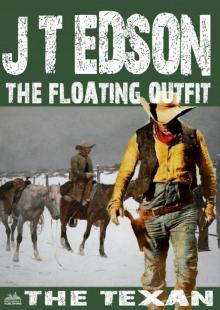 The Floating Outfit 46
The Floating Outfit 46 Dusty Fog's Civil War 11
Dusty Fog's Civil War 11 The Floating Outfit 61
The Floating Outfit 61 The Owlhoot
The Owlhoot Alvin Fog, Texas Ranger
Alvin Fog, Texas Ranger The Floating Outfit 34: To Arms! To Arms! In Dixie! (A Floating Outfit Western)
The Floating Outfit 34: To Arms! To Arms! In Dixie! (A Floating Outfit Western) The Floating Outfit 44
The Floating Outfit 44 Dusty Fog's Civil War 10
Dusty Fog's Civil War 10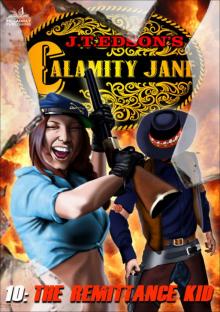 Calamity Jane 10
Calamity Jane 10 Cap Fog 4
Cap Fog 4 The Floating Outfit 51
The Floating Outfit 51 The Floating Outfit 50
The Floating Outfit 50 The Floating Outfit 49
The Floating Outfit 49 The Floating Outfit 10
The Floating Outfit 10 Apache Rampage
Apache Rampage The Floating Outfit 15
The Floating Outfit 15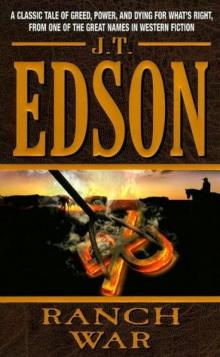 Ranch War
Ranch War The Floating Outfit 11
The Floating Outfit 11 The Devil Gun
The Devil Gun Sacrifice for the Quagga God (A Bunduki Jungle Adventure Book 3)
Sacrifice for the Quagga God (A Bunduki Jungle Adventure Book 3) Comanche (A J.T. Edson Western Book 1)
Comanche (A J.T. Edson Western Book 1) The Floating Outfit 48
The Floating Outfit 48 Wacos Debt
Wacos Debt The Rebel Spy
The Rebel Spy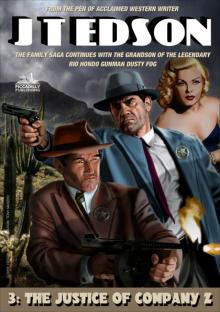 Cap Fog 3
Cap Fog 3 Trouble Trail
Trouble Trail Cold Deck, Hot Lead
Cold Deck, Hot Lead Rockabye County 4
Rockabye County 4 The Bullwhip Breed
The Bullwhip Breed Set Texas Back On Her Feet (A Floating Outfit Western Book 6)
Set Texas Back On Her Feet (A Floating Outfit Western Book 6)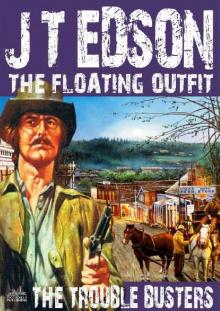 The Floating Outfit 25: The Trouble Busters (A Floating Outfit Western)
The Floating Outfit 25: The Trouble Busters (A Floating Outfit Western) Fearless Master of the Jungle (A Bunduki Jungle Adventure
Fearless Master of the Jungle (A Bunduki Jungle Adventure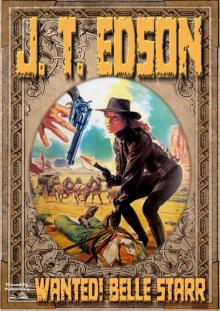 Wanted! Belle Starr!
Wanted! Belle Starr! The Big Hunt
The Big Hunt Running Irons
Running Irons The Floating Outfit 19
The Floating Outfit 19 You're in Command Now, Mr Fog
You're in Command Now, Mr Fog The Floating Outfit 27
The Floating Outfit 27 Texas Killers
Texas Killers Ole Devil and the Mule Train (An Ole Devil Western Book 3)
Ole Devil and the Mule Train (An Ole Devil Western Book 3) Bunduki and Dawn (A Bunduki Jungle Adventure Book 2)
Bunduki and Dawn (A Bunduki Jungle Adventure Book 2) The Fortune Hunters
The Fortune Hunters The Floating Outfit 12
The Floating Outfit 12 The Hide and Tallow Men (A Floating Outfit Western. Book 7)
The Hide and Tallow Men (A Floating Outfit Western. Book 7) Young Ole Devil
Young Ole Devil Slip Gun
Slip Gun The Drifter
The Drifter The Floating Outfit 45
The Floating Outfit 45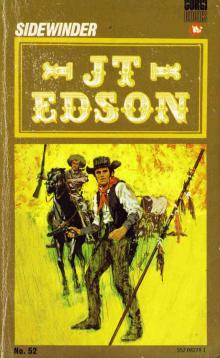 Sidewinder
Sidewinder The Ysabel Kid
The Ysabel Kid Waco 6
Waco 6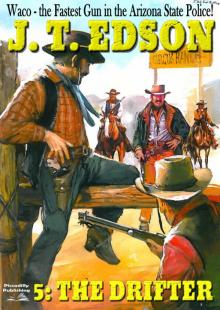 Waco 5
Waco 5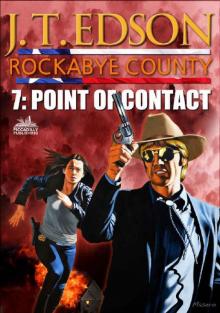 Point of Contact
Point of Contact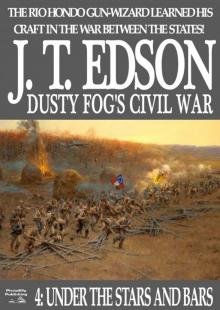 Under the Stars and Bars (A Dusty Fog Civil War Western Book 4)
Under the Stars and Bars (A Dusty Fog Civil War Western Book 4) The Floating Outfit 9
The Floating Outfit 9 Under the Stars and Bars
Under the Stars and Bars .44 Caliber Man
.44 Caliber Man The Floating Outfit 17
The Floating Outfit 17 Ole Devil at San Jacinto (Old Devil Hardin Western Book 4)
Ole Devil at San Jacinto (Old Devil Hardin Western Book 4) The Bloody Border
The Bloody Border A Horse Called Mogollon (Floating Outfit Book 3)
A Horse Called Mogollon (Floating Outfit Book 3) Waco 3
Waco 3 The Texan
The Texan The Floating Outfit 35
The Floating Outfit 35 Mississippi Raider
Mississippi Raider The Big Gun (Dusty Fog's Civil War Book 3)
The Big Gun (Dusty Fog's Civil War Book 3) Goodnight's Dream (A Floating Outfit Western Book 4)
Goodnight's Dream (A Floating Outfit Western Book 4) Waco 4
Waco 4 From Hide and Horn (A Floating Outfit Book Number 5)
From Hide and Horn (A Floating Outfit Book Number 5) The Floating Outfit 18
The Floating Outfit 18 Slaughter's Way (A J.T. Edson Western)
Slaughter's Way (A J.T. Edson Western) Dusty Fog's Civil War 7
Dusty Fog's Civil War 7 Two Miles to the Border (A J.T. Edson Western)
Two Miles to the Border (A J.T. Edson Western)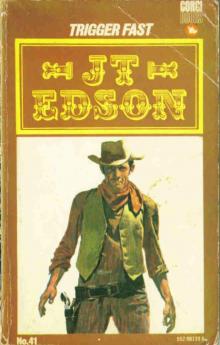 Trigger Fast
Trigger Fast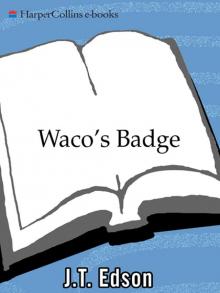 Waco's Badge
Waco's Badge A Matter of Honor (Dusty Fog Civil War Book 6)
A Matter of Honor (Dusty Fog Civil War Book 6) The Half Breed
The Half Breed Bunduki (Bunduki Series Book One)
Bunduki (Bunduki Series Book One) Kill Dusty Fog
Kill Dusty Fog Get Urrea! (An Ole Devil Hardin Western Book 5)
Get Urrea! (An Ole Devil Hardin Western Book 5) Dusty Fog's Civil War 9
Dusty Fog's Civil War 9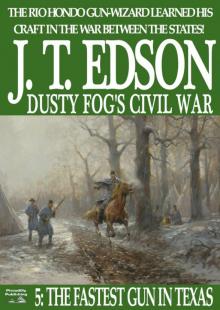 The Fastest Gun in Texas (A Dusty Fog Civil War Book 5)
The Fastest Gun in Texas (A Dusty Fog Civil War Book 5) Sagebrush Sleuth (A Waco Western #2)
Sagebrush Sleuth (A Waco Western #2) Quiet Town
Quiet Town Is-A-Man (A J.T. Edson Standalone Western)
Is-A-Man (A J.T. Edson Standalone Western) Rockabye County 5
Rockabye County 5 The Floating Outfit 14
The Floating Outfit 14 Cure the Texas Fever (A Waxahachie Smith Western--Book 3)
Cure the Texas Fever (A Waxahachie Smith Western--Book 3) The Floating Outfit 13
The Floating Outfit 13 The Road to Ratchet Creek
The Road to Ratchet Creek